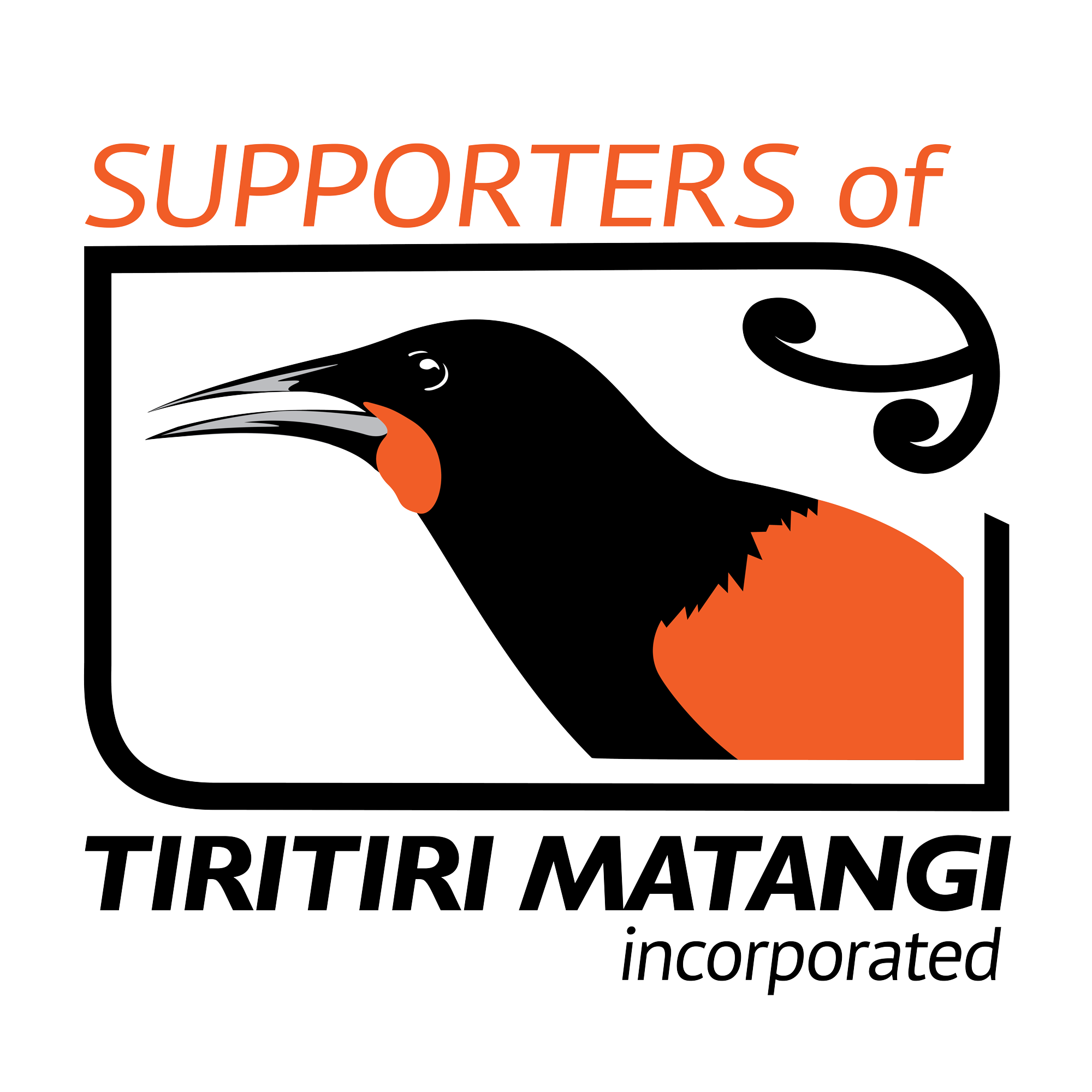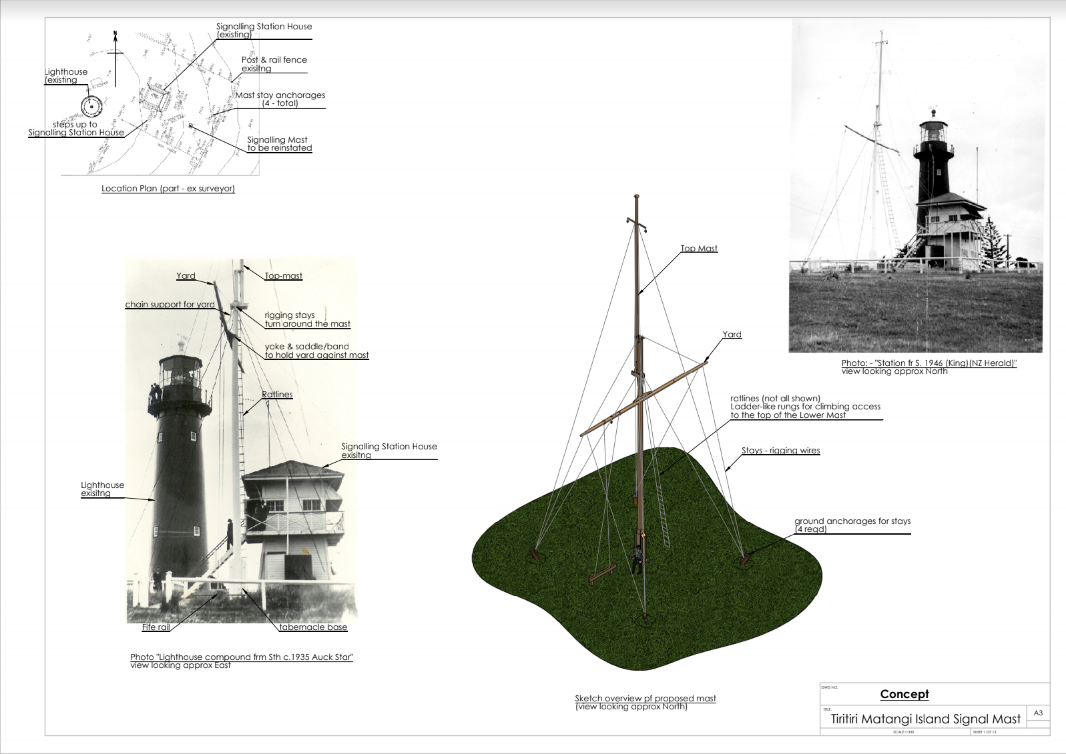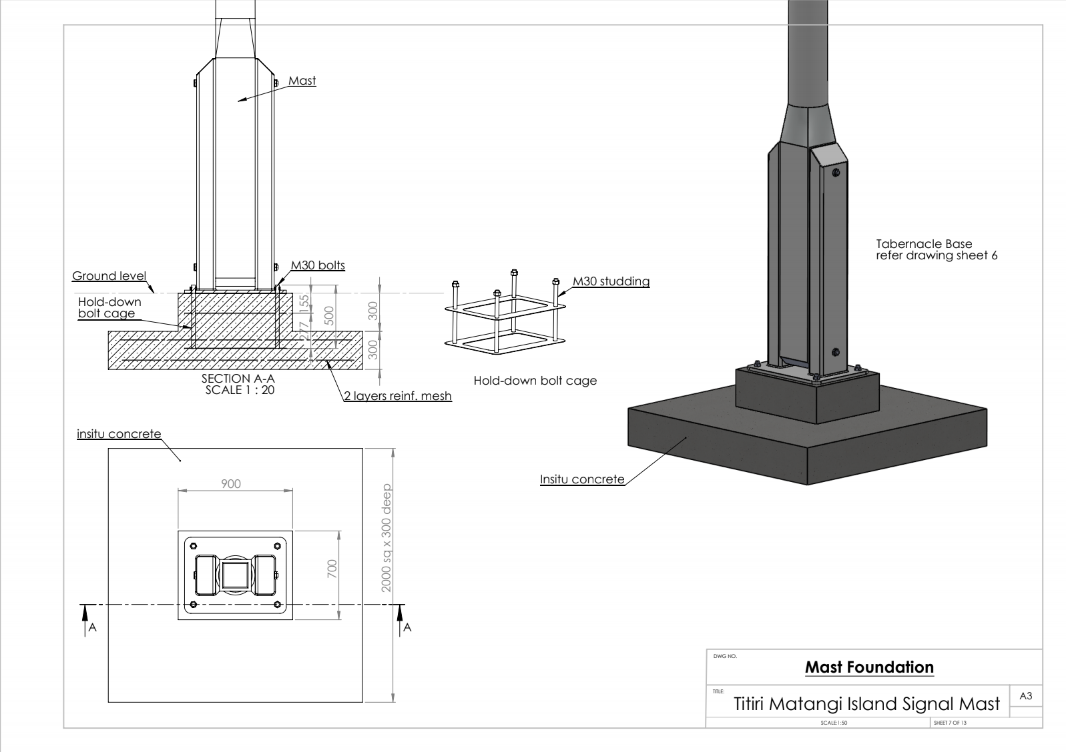Special Projects
The Tiritiri Supporters organisation has worked hard to create a world-class wildlife sanctuary, though this work is far from over. Currently a handful of capital projects are in the pipeline including a Field Centre, replica signal mast and a Lighthouse Museum.
Field Centre
For a long time, it has been recognised that the current bunkhouse does not adequately meet the needs of the Department of Conservation (DOC) and the Supporters of Tiritiri (SoTM). The bunkhouse is designed primarily for short term stays, and during peak periods there is not enough space for SoTM’s researchers and workers.
As early as 2000 the idea of a new Field Centre was mooted to fulfil the needs of visitors overnighting, on-island employees and field researchers undertaking longer-term stays.
A suitable site close to the Visitor Centre and workshops was set aside many years ago, and has remained untouched. The environmental impact of the Field Centre was a key consideration for the steering group. The final design was one that was low-impact, self-sufficient and capable of supplying additional energy for the island’s grid.
The plans include a stand-alone water catchment and storage unit, storm and wastewater treatment unit, and a generous supply of solar panels to help make up for the current solar power deficit.
 Loading...
Loading...
Not all visitors are alike, so it was important the design met the needs of the various visitors and workers who stay on the island. Bearing this in mind, a multi-functional design was selected, consisting of two large bunkrooms sleeping eleven people and two family-style four bed cabins.
The Field Centre will contain –
- Accomodation for 30 overnight visitors
- Self contained accommodation for 3 permanent staff
- Family friendly cabins
- A break-out space for researchers
- Showers, toilets and a communal kitchen
- Separate dining and lounge areas
As a key stage in developing a business plan to operate and maintain the centre, it was agreed with DOC that once the centre becomes operational, the existing bunkhouse will not be used for bookable accommodation and that SoTM would take over all booking functions.
Signal Mast
Signal flags were used internationally by ships at sea to relay short messages to those onshore.
Typically the ships would indicate via a series of flags whether a pilot ship was required or not to enter the harbour, and if further assistance was needed if the boat had been in a collision.
At night, ships would send up flares and rockets to attract the signalman’s attention. By using a series of flags they would relay their message, which would then be passed on to Devonport by the signalman.
Currently a renovated signal tower or ‘morse house’ sits alongside the lighthouse. By erecting a replica signal mast, visitors will get a fuller understanding of the island’s important role in communicating with ships.
The mast will be considerably higher than the lighthouse and has the capability to be lowered, so that it does not disrupt the operation of the lighthouse.
Its presence will be used to demonstrate the full suite of marine technology that was employed throughout the 1800s and early 1900s. On occasion, it is anticipated that visitors will be treated to a display of the original system of flags and baskets to communicate with the mainland.
Lighthouse Museum
As the oldest operating lighthouse in New Zealand, Tiritiri Matangi holds a special place in maritime history. Constructed six years after New Zealand’s first lighthouse in Pencarrow, the lighthouse was built in 1864 in an age of shifting technologies. In the 1860’s, ship traffic increased significantly with the arrival of steam-boats, so the Government set about constructing a number of new lighthouses at key locations. Seventeen lighthouses were built during the period 1860 – 1900.
One of the lighthouses built during this time was erected on Cuvier Island, which provided light for ships entering the Hauraki Gulf from the East. The Supporters organisation was gifted this exquisite ‘first order’ light from DOC, after it was rediscovered in a shed in Pureora forest. Dismantled and placed into boxes, the light and turning mechanism had been sitting there in the middle of a forest for 25 years. A heritage expert at DOC approached former Tiritiri lighthouse keeper, Ray Walter, to find out whether the society would like guardianship of it. The answer was a resounding ‘yes’. Weighing 8 tonnes and standing at 6.5 metres in height, the light has been restored and is now in storage in a former workshop building behind the lighthouse.
To display this light properly, the Supporters have developed a plan to double the size of the workshop building and – with a view to minimising the visual impact – excavate the basement. As well as displaying this elaborate light, the Museum will tell the story of the Hauraki Gulf’s lighthouse keepers and its pre-European maritime history, through artefacts and panel displays.
Roadmap
After significant public and iwi consultation, all three projects have been granted leases by DOC and resource consent from Auckland Council. Further approval is required from Heritage New Zealand for the Lighthouse Museum, so that project is still awaiting sign-off.
In order to advance the two approved projects, the Supporters removed the Lighthouse Museum from their application, and have subsequently been granted resource consent for the signal mast and Field Centre. Currently the Supporters are actively fundraising to execute these projects.



